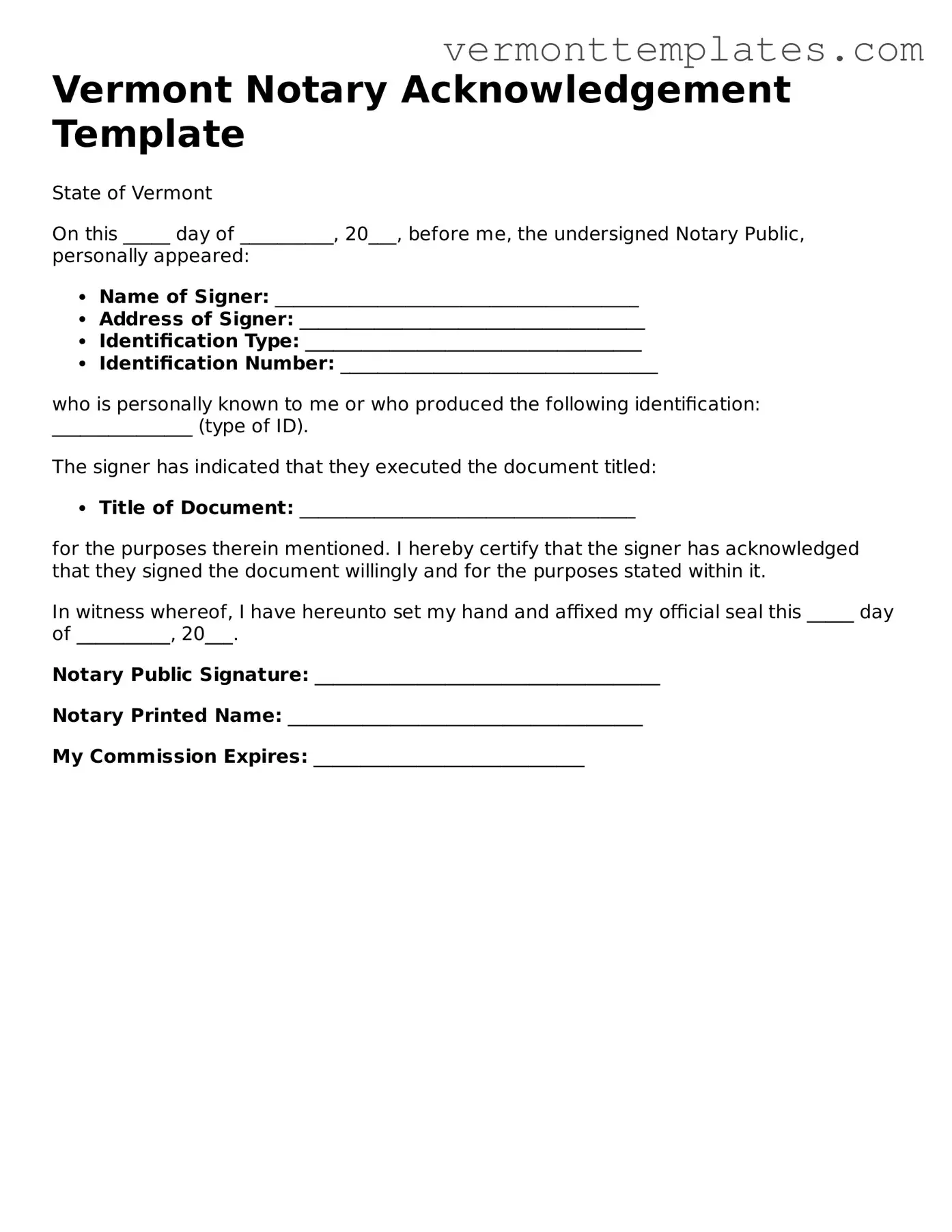Vermont Notary Acknowledgement Template
State of Vermont
On this _____ day of __________, 20___, before me, the undersigned Notary Public, personally appeared:
- Name of Signer: _______________________________________
- Address of Signer: _____________________________________
- Identification Type: ____________________________________
- Identification Number: __________________________________
who is personally known to me or who produced the following identification: _______________ (type of ID).
The signer has indicated that they executed the document titled:
- Title of Document: ____________________________________
for the purposes therein mentioned. I hereby certify that the signer has acknowledged that they signed the document willingly and for the purposes stated within it.
In witness whereof, I have hereunto set my hand and affixed my official seal this _____ day of __________, 20___.
Notary Public Signature: _____________________________________
Notary Printed Name: ______________________________________
My Commission Expires: _____________________________
